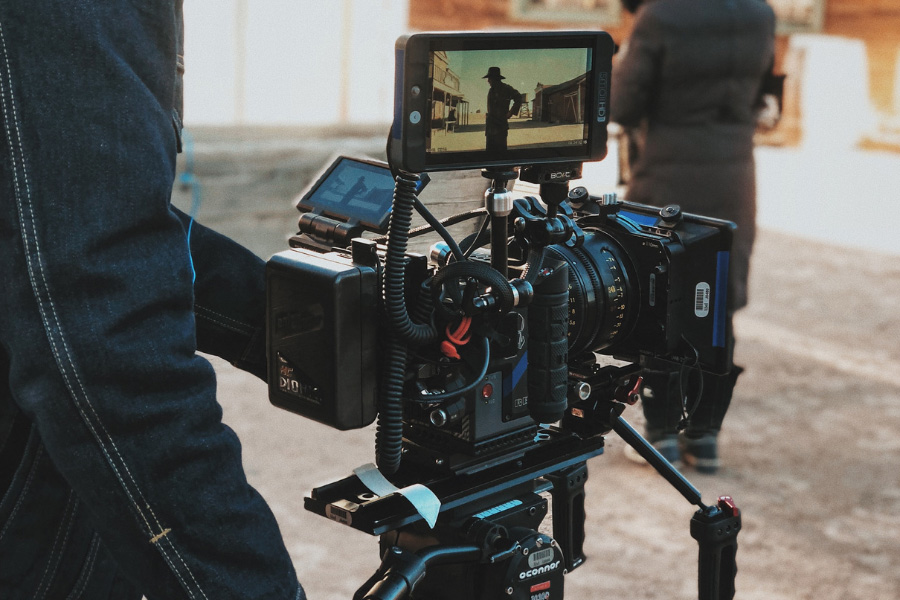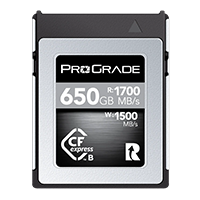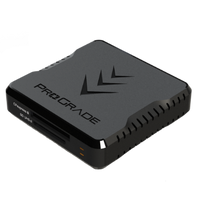The world of videography and filmmaking is constantly evolving, with new technologies pushing the boundaries of what’s possible. The latest of these technologies is 8K resolution video, which offers an unprecedented level of detail and clarity that was previously unimaginable. With 8K, filmmakers and videographers can capture images with incredible precision and realism, creating a truly immersive viewing experience.
However, this new videography frontier also brings unique challenges and opportunities that filmmakers must navigate. In this blog post, we’ll explore the impact of 8K resolution on the industry, discuss its advantages and challenges, and provide practical tips for working with 8K footage. So, let’s dive in and discover the world of 8K resolution video together.
The Advantages of 8K Resolution: How Ultra-High-Definition Enhances the Viewing Experience
8K resolution is a significant step up from the current 4K standard, with four times as many pixels packed into each frame. This results in a level of detail and clarity that is truly stunning, creating an immersive and engaging viewing experience for audiences.
With 8K, viewers can see every detail of the image with unparalleled precision, from the texture of a fabric to the intricate features of a landscape. This level of detail brings a new level of realism to video content, creating a sense of presence and depth that was previously impossible.
In addition, 8K technology also offers enhanced color depth and dynamic range, allowing for a wider range of colors and a greater contrast between light and dark areas of the image. This further enhances the viewing experience, creating more lifelike and vibrant visuals that capture the full spectrum of the human eye’s perception.
Overall, 8K resolution offers filmmakers and videographers an incredible tool to push the boundaries of their craft and create content that is both visually stunning and emotionally impactful.
The Implications of 8K Resolution for Filmmakers: Content Creation and Distribution
The introduction of 8K resolution has significant implications for content creation and distribution in the filmmaking industry. Videographers must now consider how to create and distribute content that takes advantage of this cutting-edge technology.
One of the biggest challenges is the increased storage and processing power needed to handle the massive amount of data that 8K resolution requires. This means filmmakers need high-end hardware and software that can handle 8K footage, which can be costly.
Another challenge is the need for higher-quality lenses and camera equipment to capture the full potential of 8K resolution. The increased level of detail and clarity provided by 8K resolution can highlight flaws in cheaper equipment, making it essential to use high-quality gear to produce professional-grade footage.
On the distribution side, 8K video distribution requires filmmakers to share files with significantly larger capacity. Naturally, that requires higher bandwidth and faster internet speeds.
Despite these challenges, the 8K resolution presents exciting opportunities for filmmakers and videographers to push the boundaries of their craft and create truly immersive and engaging content. With the right equipment and techniques, 8K content can be an incredible tool for storytelling, allowing filmmakers to capture the world around them with unparalleled detail and realism.
Practical Tips for Working with 8K Footage: How to Make the Most of Ultra-High-Definition Video
Choose the right camera and lenses: When shooting in 8K resolution, it’s essential to choose the right camera and lenses for the job. Look for cameras with large sensors and high dynamic range to capture your scene’s full range of colors and details. Similarly, consider using lenses that can resolve the fine details that 8K resolution demands.
Choose the proper memory cards: The higher the resolution you capture, the more critical you need to be when choosing the memory cards to ensure reliable performance and prevent data loss or corruption. While Full HD video has a total of 2,073,600 pixels and a 4K video of 8,294,400 pixels, then 8K video captures light and color values for 33,177,600 pixels, frame after frame. To put that into perspective, each second of 8K video shot at 29,97 fps requires your memory card to store nearly 1 BILLION pixel values. So, look for memory cards that can handle the high data rates needed for 8K video, such as ProGrade Digital’s CFexpress Type A and CFexpress Type B memory cards, designed for high-resolution video capture. Additionally, consider investing in multiple memory cards to avoid running out of storage space during a shoot and to speed up your workflow.
Establish proper storage and file management solutions: Storing and managing 8K footage requires significant storage space and reliable data management. High-capacity and high-speed memory cards are merely one side of the coin. External hard drives capable of handling large volumes of data are also essential for storing and backing up your footage. To work with 8K footage, it’s recommended to use high-speed Solid State Drives (SSDs) that can handle the large file sizes and fast data transfer rates required by the format. Ideally, you should look for a RAID storage system with at least 50TB of available capacity. That said, you for sure can get away with SSDs with fast read and write speeds, as long as it has a large storage capacity. Just remember that it’s essential to choose a reliable and durable SSD that can handle the demands of professional video production. Similarly, it’s also necessary to establish a solid file management system to keep your files organized and easily accessible. Otherwise, with large 8K files, things can quickly get out of hand.
Optimize your editing workflow for 8K: 8K video editing is an intensive process that requires high-end hardware and software. Editing applications like Adobe Premiere Pro, Final Cut Pro, DaVinci Resolve, and Vegas Pro all support 8K editing, but system requirements vary. A high-quality graphics processing unit (GPU) and hardware accelerator cards like AJA’s KONA 5 and the Apple Afterburner are usually necessary to achieve smooth playback, especially with added effects and filters. To get away with less capable hardware, use proxy files or optimized media to speed up your editing process.
Visual effects and post-production: When working with 8K footage, post-production is more demanding than ever. Consider using visual effects specifically designed for 8K resolution, as lower-resolution effects may not hold up at the higher resolution.
Rethink framing, composition, and visual storytelling: Working with 8K resolution requires a shift in how you approach framing, composition, and visual storytelling. With four times the resolution of 4K and sixteen times the resolution of Full HD, 8K offers a level of detail and clarity that can be both stunning and overwhelming. To make the most of this ultra-high-definition technology, it’s essential to carefully assess your framing and composition, paying attention to small details that may have gone unnoticed in lower resolutions. Focus on strong visual storytelling and use the increased resolution to enhance your narrative.
Adapting to 8K: How Filmmakers Can Harness the Potential of Ultra-High-Definition Technology
Embracing 8K technology as a creative tool can elevate the art of filmmaking to new heights. However, it’s important to balance the pursuit of quality with accessibility, as not all audiences have access to 8K displays.
One way to strike this balance is by shooting in 8K but delivering the final product in a lower resolution. This approach allows you to take advantage of the benefits of 8K while still ensuring that your content is accessible to a broader audience. Additionally, mastering in 8K can future-proof the content for distribution on future 8K displays.
To further balance quality and accessibility, a useful technique is to strategically employ 8K footage. For instance, you can opt to shoot particular scenes in 8K to capture maximum detail and then blend them with footage shot in a lower resolution. Certain scenes naturally lend themselves to 8K, such as ones with intricate textures or subtle gradations of light and shadow. By contrast, other scenes may not require such high resolution. This approach enables you to highlight the advantages of 8K while still keeping the overall file size and distribution requirements manageable.
The Future of 8K Videography: Predictions and Trends for Ultra-High-Definition Filmmaking
As 8K resolution continues to gain traction and as more and more camera manufacturers and post-production software companies make 8K technology more accessible, we can expect to see a greater variety of content produced in ultra-high-definition.
One trend that seems likely to continue is expanding 8K content beyond niche uses, such as high-end commercials and experimental films.
Over the coming years, we will also see increasing adoption of 8K by streaming platforms and broadcast networks. While 4K has become the norm for many streaming services, the availability of 8K content is expected to increase as the technology becomes more mainstream. Additionally, as more consumers upgrade to 8K-capable displays, the demand for 8K content will continue to grow.
The development of new technologies, such as augmented reality and virtual reality, will also likely impact the future of 8K videography. As these technologies become more prevalent, there may be a greater demand for ultra-high-definition content to provide a more immersive experience. Furthermore, camera and editing technology advances may lead to even higher resolutions and improved image quality, further pushing the boundaries of what’s possible in filmmaking.
The future of 8K videography looks bright, with increased accessibility and growing demand for ultra-high-definition content. As filmmakers and content creators continue experimenting with this technology and pushing its limits, we can expect to see some truly stunning and groundbreaking work in the years ahead.
Conclusion: Embracing the Opportunities and Overcoming the Challenges of 8K Resolution in Videography
The necessary gear and hardware for 8K video editing can be expensive. At the same time, it is important to remember that 8K video is at the high end of the editing chain and is currently not for low-budget projects. However, investing in 8K video production and post-production can still be a smart choice for filmmakers shooting valuable content that needs to be future-proofed for years to come. After all, 8K resolution offers a new horizon in videography and filmmaking, providing ultra-high-definition footage with enhanced color depth, dynamic range, and visual detail. So, by embracing the opportunities and overcoming the challenges, filmmakers can stay ahead of the curve and produce stunning content that will stand the test of time.





